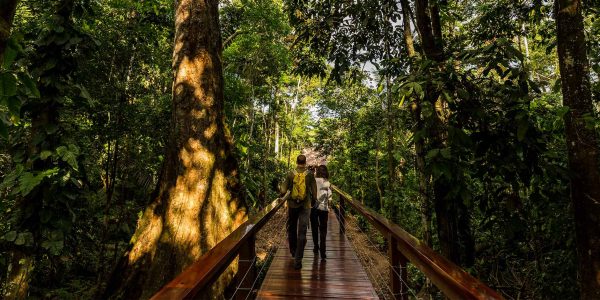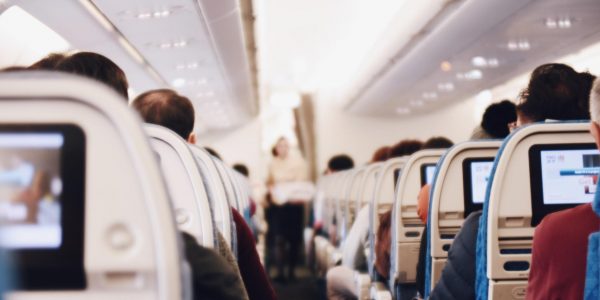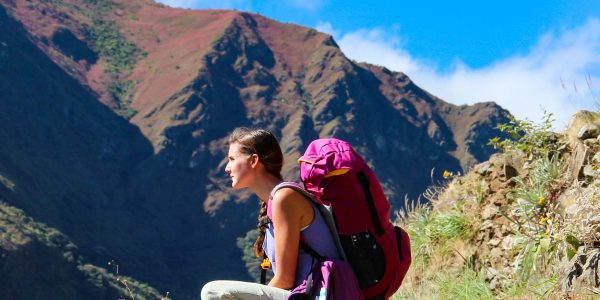Over the past few years, the Inca Trail to Machu Picchu has become one of the world’s most famous treks and a must for thousands of travelers visiting Peru. Whether you are planning to hike this trek on your next trip to Peru or just a curious explorer, keep reading. You’ll find here a complete guide on all you need to know about hiking the Inca Trail to Machu Picchu.
The Qapaq Ñan or Inca Trail, in English, was one of the most extensive path networks in the world. This trail used to connect several Andean towns in Peru, Bolivia, Argentina, Chile, and Ecuador to Cusco, the center of the Inca Empire – absolutely genius! People traveled along these roads to send messages, trade, and, of course, find new territories. It was all part of a brilliant strategy to expand their empire, Tahuantinsuyo, and conquer smaller cultures.
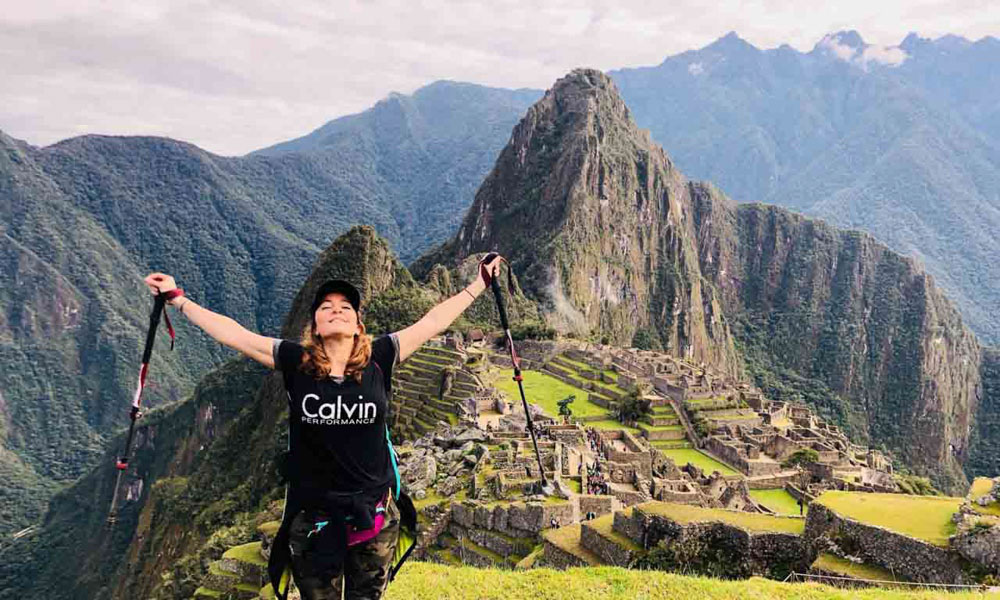
One of the most amazing and well-preserved parts of the trails unites Cusco to Machu Picchu, the jaw-dropping Inca citadel. Since this section was first discovered and opened to the public, thousands of people have come to Peru to enjoy it as one of the most incredible trekking experiences in the world! And who wouldn’t? The Inca Trail to Machu Picchu’s beauty is undeniable! Never-ending change in scenery from snow-capped mountains and agricultural plains to lush, almost vertical walls of evergreen vegetation, and the last vestiges of one of the greatest civilizations in America.
THE ROUTES
The classic and most popular route is the 4-day itinerary. However, the Inca Trail to Machu Picchu has other itinerary options with fewer or more days of hiking. Check this out:
The Short Inca Trail (2-day itinerary)
Starting at the 104 km on the train route from Ollantaytambo to Machu Picchu, the short Inca Trail has become one of the best alternatives to the Classic one when there’s no more availability for the 4-day itinerary. Also, it is an excellent option if you are looking for a great but not so challenging hike to Machu Picchu. This itinerary lasts 2 days and, actually, you only hike the first day for about 6 to 7 hours, depending on your physical condition, some people even make it in 4 hours!
And why does it last just 2 days instead of 4? Basically, because you make the first part of the route by train. You board the train at Ollantaytambo station, but instead of going all the way to Aguas Calientes (Machu Picchu Town), you get off the train at the 104 km and start hiking to Machu Picchu. As on the original route, you reach Machu Picchu citadel on foot, but in this case, you don’t visit it on the same day, but the day after. You won’t camp either, as soon as you arrive at Machu Picchu and then go down to Aguas Calientes, a hot shower and comfy bed are waiting for you.
Tip: If you feel like it and have a good physical condition, you can make the short Inca Trail (including the visit to Machu Picchu) in just one day. Ask for it when planning your next trip to Peru.
The Classic Inca Trail (4-day itinerary)
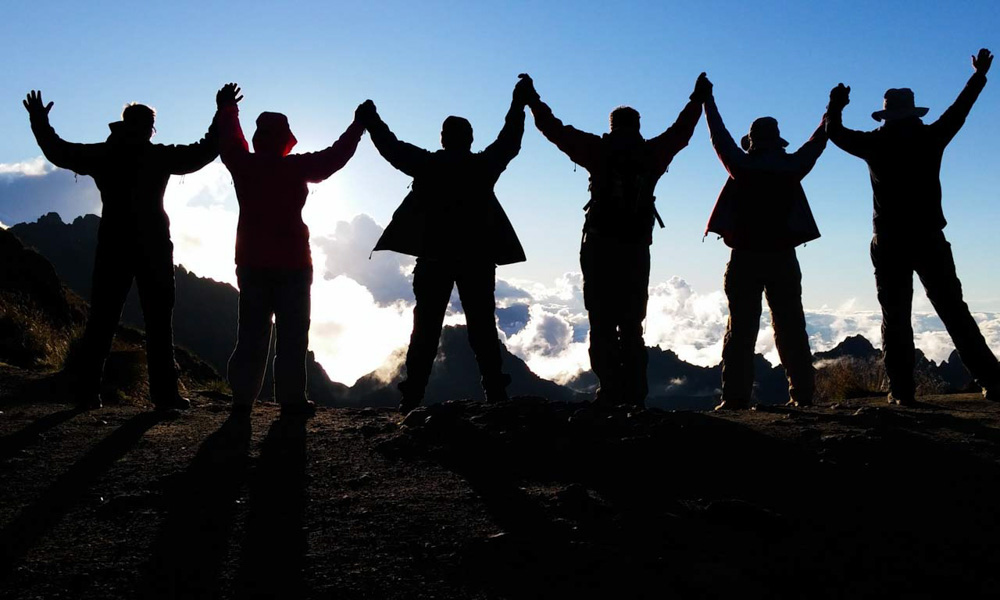
The most famous and popular one. This itinerary starts in the Sacred Valley, at the 82 km along the train route that connects Cusco to Machu Picchu. During the next 4 days, you’ll hike along the stone trail for about 6 to 8 hours daily and camp below starry nights. You’ll pass by fascinating archaeological sites throughout the entire route, different ecosystems, and the stunning views of the famous Machu Picchu citadel in the last section of the trail. Definitely a lifetime experience. Check our itinerary!
The Inca Trail (5-day itinerary)
This route is just the same as the 4-day itinerary but at a slower pace. You’ll hike lesser hours a day and have one more camping night before arriving at Machu Picchu citadel.
WHAT DO YOU NEED TO KNOW BEFORE BOOKING THE INCA TRAIL TO MACHU PICCHU?
If you are ready to pack your bags and fly to Cusco, here’s all you should know before starting your adventure!
Which itinerary should I choose?
As you see, there are some options to choose from when booking the Inca Trail. However, choosing one or the other will only depend on your travel style and your trip length.
Choose the 5-day itinerary if you want to avoid crowds, take the trail slowly, have better acclimatization, and have a more extended stay in Peru.
A 4-day itinerary is always a great option for anyone wishing to hike the Inca Trail. It is the classic and most popular route, and 4 days is enough time to enjoy this trek at its most. See full itinerary.
The Short Inca Trail is what we always recommend to people who don’t have much time to travel, don’t want to hike for several days and camp. It’s also the option we suggest when there are no more spaces available for the classic one. It is definitely a nice and more comfortable option to reach Machu Picchu on foot. Check this option.
When is the best time to hike the Inca Trail?
Peru, and mostly the Andes, have two main seasons throughout the year: rainy and dry season. The rainy season goes from December to March, and it’s when heavy rains fall all over the Andes and jungle. It is also the summertime in Peru. By contrast, the dry season starts in April and ends around October to November. Although it is winter in Peru, it is also the preferred season for many travelers because of the clear skies in the Andean regions of Peru, such as Cusco or Puno. Not in Lima, unfortunately!
If you want to avoid big crowds and cold nights, you should definitely hike the Inca Trail during March, April, October, and November. Those are the starting and ending months of the dry season. By this time, rains are almost gone, the temperature hasn’t dropped much, and not many people are traveling.
May to September is the busiest time for the Inca Trail, many hikers are coming to Peru, and there’s almost no availability. Still, if you don’t want a single drop falling from the sky, this is the right time for you!
Furthermore, hiking the Inca Trail through the rainy season, during December, January, or early March, is definitely possible. However, it is very likely to have long showers, landslides, or even unexpected closes of the trail.
Is the Inca Trail to Machu Picchu open all year? No, it’s not. Inca Trail in February is closed because this month is the peak of the rainy season. Be aware of that when booking your trip.
Permits
As you can imagine, this world-famous trek is top-rated among many people around the world. Being part of the UNESCO World Heritage List, the Inca Trail to Machu Picchu is highly protected. It offers 500 tickets per day for tourists and staff (porters, guides, cooks), which means just around 250 travelers per day. It may seem like a lot, but having thousands of tourists fighting over those tickets many months in advance makes it hard to get one.
Note: Tickets don’t admit changes. Once your Inca Trail ticket is purchased, you can’t change any information. Make sure the information you provide is correct.
When should you book your Inca Trail tickets?
If you wish to include the Inca Trail to Machu Picchu on your next trip to Peru, you should complete your booking at least 6 months in advance to guarantee your tickets. The entrance fee for the Inca Trail is S/292 (Peruvian Soules) or around $90. It can only be purchased by authorized tour agencies, the ones that operate it. There is no way to buy the Inca Trail permit and go on your own. It is mandatory to hire a tour operator due to all the logistics this trail requires. Curious about the availability for the Inca Trail? Leave us a message!
How to choose a tour operator for the Inca trail?
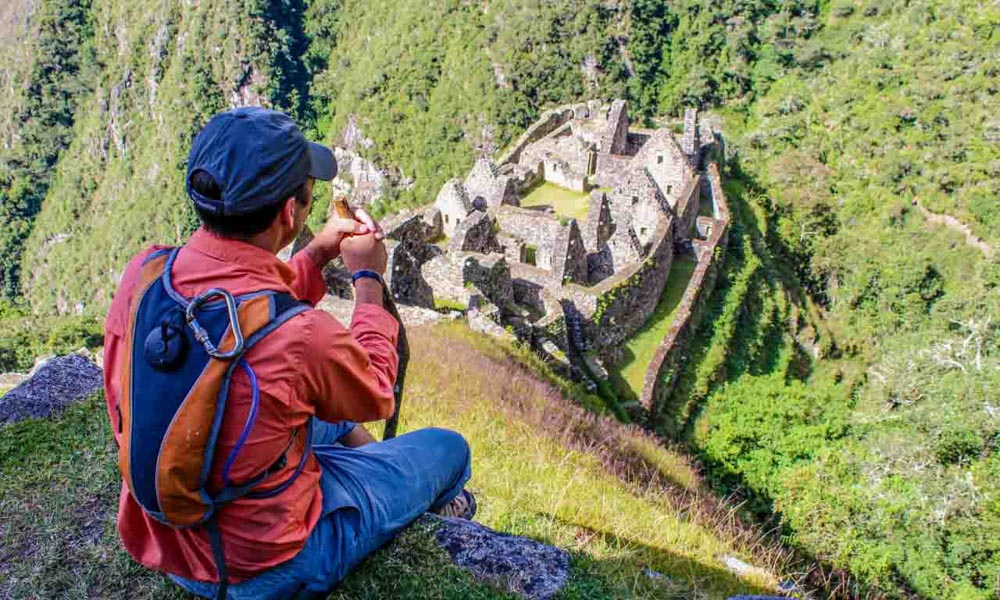
Browsing for a travel agency can be a real nuisance. Hundreds of companies offering the best prices, excellent staff, and an enjoyable experience. To make sure you will have a pleasant trip, here are some tips when choosing your travel agency:
- Check their reviews on TripAdvisor, Google reviews, and social media. Look for people that had a similar trip as you want to and see how it went.
- Contact them and see how they address your questions and requirements. Clear and straightforward communication from the start is critical when planning a trip.
- For responsible travel, it is very important to have excellent experienced guides, proper equipment, and fairly paid porters. Ask them about those topics.
- Check carefully what’s and what’s not included in the trip proposal. Many agencies have lower rates because they don’t include fees, permits, sleeping bags, trains, or hotels. The best price is the lowest price. Make sure you are hiring a responsible company.
What to expect from the Inca Trail, and what are the physical requirements?
At this point, you already know the Inca Trail to Machu Picchu is very popular. Expect many people, mostly during the dry season, hiking along the one-way Inca Trail to Machu Picchu. Guides are the best spacing out the groups, and you won’t really end up walking with a random group of strangers, but you’ll definitely see other people.
You’ll rest each night at the established campsites sharing the spot with travelers from other agencies. Most agencies bring their own portable toilets due to the terrible conditions of the bathrooms at the encampments.
The Inca Trail will have moderate difficulty for active people or skilled hikers. Yet, it may feel challenging if you are not very fit or don’t have much experience hiking, mainly because of the high altitude during the trek. Along the route, you’ll go through some peaks and pass up to 4005 meters, which makes the trail more difficult due to the lack of oxygen.
Now that you have booked your Inca Trail to Machu Picchu…
WHAT DO YOU NEED TO KNOW BEFORE HIKING THE INCA TRAIL TO MACHU PICCHU?
1. Have your passport ready
All trekkers are required to carry their passports with them at all the time. Along the trail, your passport will be inspected for identification at checkpoints.
Note: If your passport number has changed since the original booking, bring both of them with you since they will be checked.
2. Pack smart, be aware of weight limits
There is no need (or possible) to bring all the luggage with you during the trek. All hotels will allow you to leave your main bags at their storage, which is very safe.
On your briefing session before the trek, guides provide small backpacks to repack all the things we will really need for the Inca Trail. Due to Peruvian regulations, each passenger is allowed to take a pack of no more than 7 kilograms (15lbs), including the sleeping bag.
We highly recommended bringing a small day-pack to carry just the essentials during the trek, such as water, cameras, rain jacket, sunglasses, and other personal items.
3. Bring a walking stick and a sleeping bag
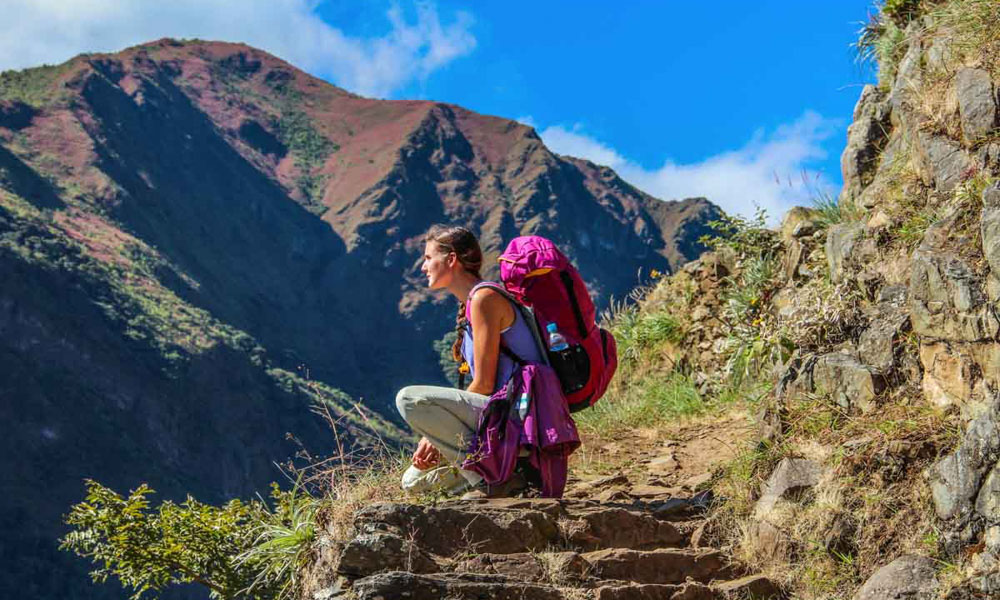
Bringing a walking stick is a great idea to make this trek more manageable and protect your joints. You don’t need to bring them all the way from home, you can purchase or rent a pair of them in Cusco. Just keep in mind that sticks with metal tips are not allowed to preserve the paths of the Inca Trail. Ask for wooden sticks or regular ones with rubber tips.
Most agencies don’t include sleeping bags since many travelers have a good quality sleeping back at home. Whether you are bringing your own sleeping bag or not, ask your tour operator about it and make sure you’ll have one during your trek.
4. Prevent altitude sickness or Soroche
Soroche is a common predicament that most travelers are afraid of when traveling to Peru. Altitude sickness happens due to low-pressure oxygen at high altitudes. The symptoms of altitude sickness are headaches, stomach illness, fatigue, shortness of breath, or dizziness. But don’t be afraid! We can fight Soroche with the basics: drink plenty of water! Make sure you are appropriately hydrated, have some days to acclimate before the actual trek, rest, eat light, and drink coca tea.
Coca leaves are easily obtainable and are considered by many as the best way to combat potential altitude sickness. You can also crew them for better results (spoiler, they don’t taste good)! A pharmaceutical option is Acetazolamide sold under the trade name Diamox, which works as an effective altitude sickness preventative.
Pro tip: You can buy Sorojchipills, a pill that helps when you already have altitude sickness.
5. Guides and support staff
For your Inca Trail trek, you will have a professional bilingual guide and one assistant if there are 9 or more travelers in your group. Porters will carry the common camping equipment, and there will also be a kitchen crew in charge of making delicious food.
6. Meals and snacks
You will be served 3 square meals and some snacks during the day, but it’s always a good idea to bring some more with us.
7. Drinking water
Bring a flask or a bottle of water to refill it with filtered, boiled water every day along the trek.
8. Tipping
Tipping in Peru is not mandatory, but it is always a nice way to thank all the staff that made your Inca Trail a great experience. Multi-day treks, as the Inca Trail to Machu Picchu, requires the effort of many people that will go with you during all the route, even if you don’t see them during the day. Tipping for good service can also make a significant gesture to some people, such as the porters (but don’t forget to hire a responsible trekking company!). Here is some suggestions when tipping, but it’s up to you:
- Porters: 80 to 120 soles per porter per group
- Cooks: 80 to 120 soles per cook per group
- Guide: 120 to 170 soles per guide per group
WHAT TO PACK FOR THE INCA TRAIL?
In the highlands, temperatures have accentuated variations between day and night with sudden temperature falls after sunset. Expect sunny days with temperatures up to 15°C and 20°C (59°F to 68°F), and nights down to 5°C (41°F), reaching 0°C (32°F) at some campsites.
Having that in mind, you will need to pack for a variety of conditions while keeping it as light as possible, up to 7 kilograms (15lbs), including your sleeping bag.
1. Documents:
- Passport (Mandatory)
2. Clothes:
- Light thermal clothing (especially for sleeping)
- Rain jacket
- Gloves
- Hat and cap for sun protection
- Woolen socks
- Waterproof trekking boots
- Sandals or light shoes for comfort while at camp
3. Toiletries:
- Sunblock lotion and sunglasses
- Insect repellent (20% or more DEET)
- Small towel
- Toilet paper and sanitizer
4. Accessories:
- Flashlight and spare batteries
- Camera, camcorder and extra set of batteries
- Plastic bags for storing your dry clothes (in case of rain)
5. Outdoor gear:
- Sleeping bag (you can also rent it in Cusco)
- Flask
- Walking sticks with rubber tips
- Comfortable small day pack (that you’ll need to carry by yourself)
6. Others:
- Cash in soles for small purchases
Now that you know all about the Inca Trail to Machu Picchu let’s pack your bags and see you in Peru!




